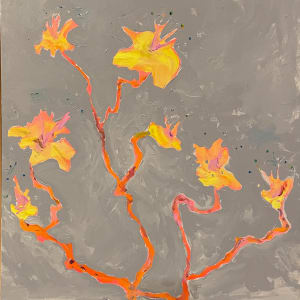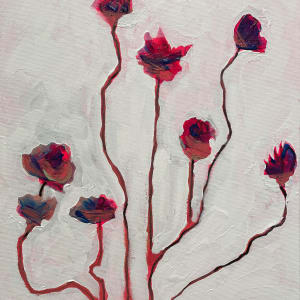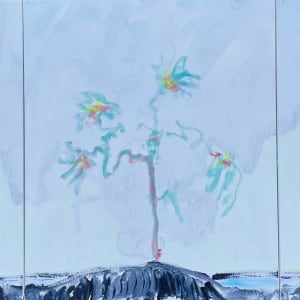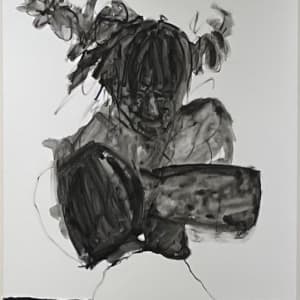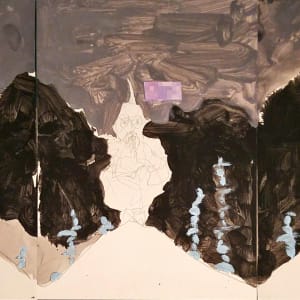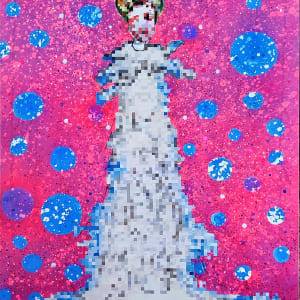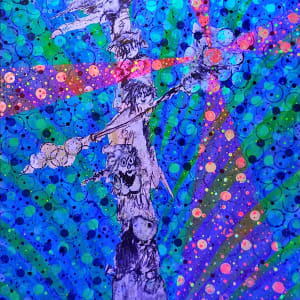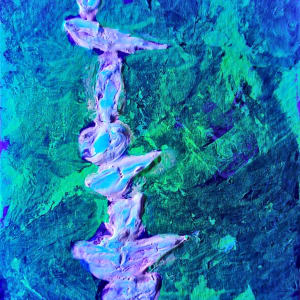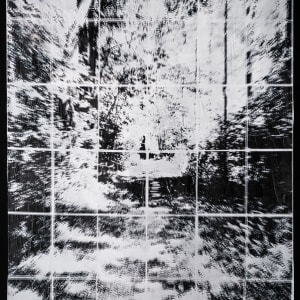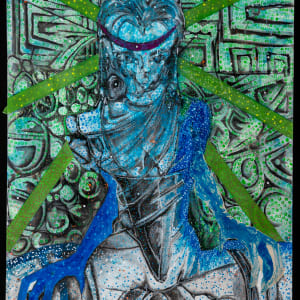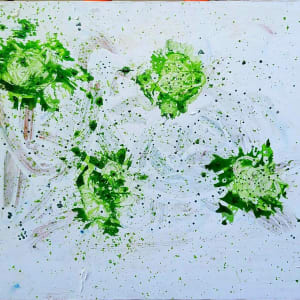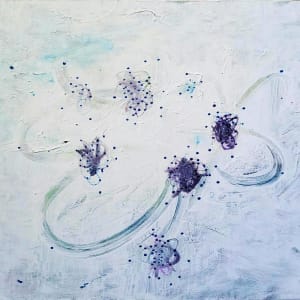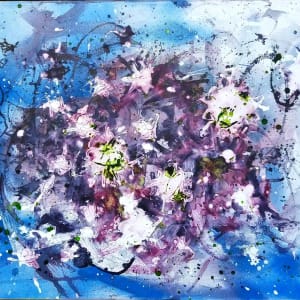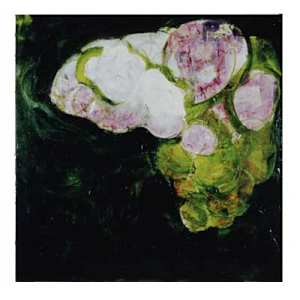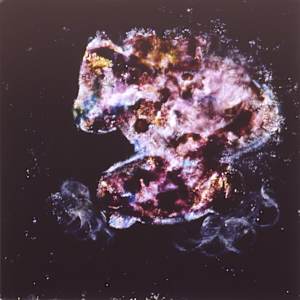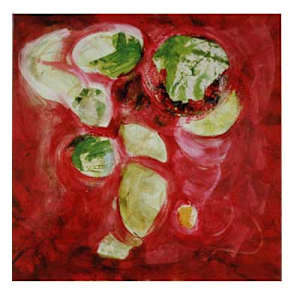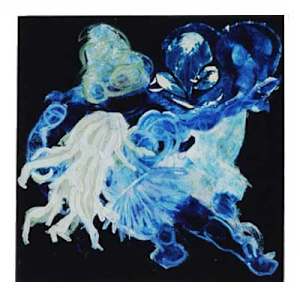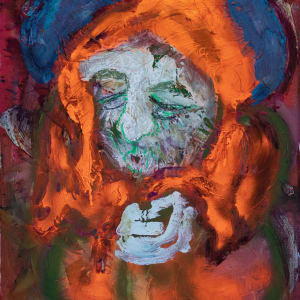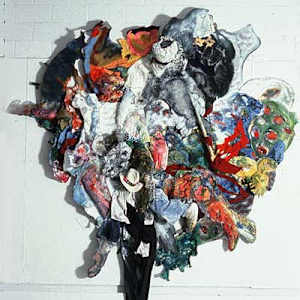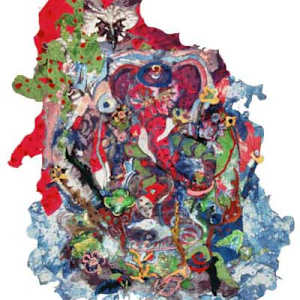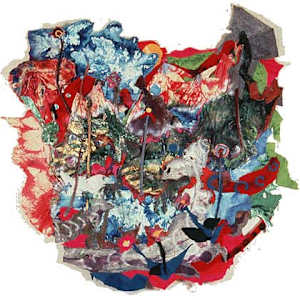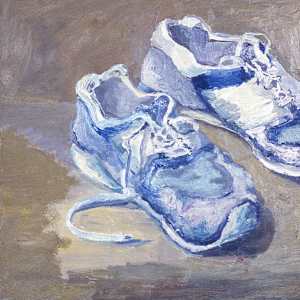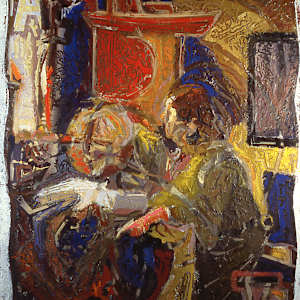The Learning Platforms
The Learning Platforms series is influenced by several elements such as Simulation Theory, Machine Learning, Quantum Physics, & Information Architecture. The series uses the totem motif to symbolize the layered structures that bridge the digital, physical and spiritual worlds. The totems signify a hierarchy of dependence that we live on; a reliance on technology and people, that at times, seem to exist in contradiction. They stand, foreshadowing the untold, uncomfortable truths of exponential growth.
The Stacks
The Stacks series draws on the power dynamics of wealth inequality. The artworks narrative unfolds in what seemingly looks like natural structures. They balance and bloom reflecting the hierarchies, obfuscation, and influence of the invisible hand of power.
The Commons
The Commons (2018) gives the viewer snapshots into a grander narrative via the Prologue. The Prologue is a series of, seemingly disjointed, images, linked by character Peter Bayron. Peter chronicles the story of how Eno, The Story Engineers, and he navigate The Enchanted Commons, which represent a cultural movement and social phenomenon that underscores openness, community, and social justice. The Commons has been influenced by the writings of Makoto Shinkai, particularly in Your Name., as well as other Japanese manga and anime.
Recursion
The Recursion (2005) paintings are less of a series than a collection of artworks that embodies a self-referential process. These works were done in parallel with Les Grandes Allégories series.
Les Petites Allégories
Les Petites Allégories series (1999-2001) focused on portraying a single figurative allegory. Each character represents abstract ideas or experiences using classical narrative compositions to convey a broader message about present day issues or events. Les Petites Allégories series departed significantly from the Felt series in both creative materials and process. Embracing a much smaller scale and the traditional rectangular format led to a deeper exploration into process. By contrast, they sharply diverged, stylistically, from the physical nature of the Felt series.
Felt Series
The Felt series (1998-1999) emerged from a playful experimentation with materials and techniques of the Early Works. While exploring the use of found objects, the series demonstrates how a found objects' meaning is directly connected to its context.
The paintings depict fictional characters, plants, and animals in mythological environments. Many of them examine allegories of authority, authenticity, and play.
The Felts are the first experiment with a technique called trompe l’oeil, in which the illusion of painting and the physical, sculptural qualities begin to merge.
Early Works
The Early Works (1994-1997) is characterized by a range of styles, from direct perception, to experiments with various materials and methods. The use of fabric dyes and handmade materials are iconic on this period. Some works were meticulously constructed using dyed cotton balls, which were dried and felted before being applied onto the canvas. Other canvases used tie-dyed or batik techniques to compose interesting compositional structures.

